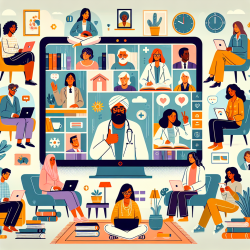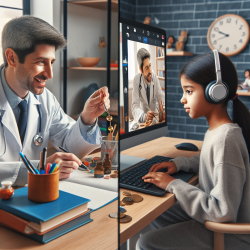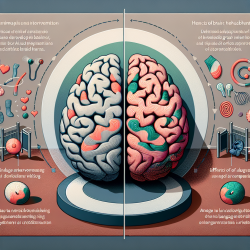Introduction
The global COVID-19 pandemic necessitated a rapid shift from traditional face-to-face clinical practicum to virtual simulation in various educational settings. The research article "P Stands for Pivot: Pivoting Face-to-Face Practicum to Virtual Simulation during the Pandemic" offers valuable insights into this transition. This blog explores how practitioners, particularly in speech-language pathology, can enhance their skills by implementing the outcomes of this research or by engaging in further studies.
Understanding Virtual Simulation
Virtual simulation emerged as a crucial tool to ensure continuity in clinical education during the pandemic. It provided a safe and effective alternative to traditional clinical settings, allowing students to maintain their clinical competence while adhering to public health guidelines. The research highlights the guiding principles for adopting virtual simulation, emphasizing quality, fluid delivery, and institutional support.
Implementing Virtual Simulation in Practice
For practitioners in speech-language pathology, virtual simulation offers a unique opportunity to refine their skills. Here are some strategies to consider:
- Commit to Quality: Ensure that virtual simulations are of high quality and align with clinical learning objectives. This involves selecting appropriate simulation platforms and resources.
- Phased Approach: Adopt a phased approach to virtual simulation, combining asynchronous and synchronous learning. This allows for flexibility and adaptability to changing circumstances.
- Financial Support: Advocate for financial support from institutions to invest in virtual simulation technologies and resources.
Encouraging Further Research
While virtual simulation has proven effective during the pandemic, there is a need for ongoing research to optimize its use in clinical education. Practitioners can contribute to this field by:
- Conducting Studies: Engage in research to evaluate the effectiveness of virtual simulation in speech-language pathology and other healthcare disciplines.
- Collaborating with Peers: Work with colleagues to share insights and best practices, fostering a community of learning and innovation.
- Exploring New Technologies: Stay informed about emerging technologies in virtual simulation and their potential applications in clinical practice.
Conclusion
The transition to virtual simulation during the pandemic has highlighted its potential as a valuable tool in clinical education. By implementing the outcomes of the research and engaging in further studies, practitioners can enhance their skills and contribute to the advancement of virtual simulation in healthcare. To read the original research paper, please follow this link: P Stands for Pivot: Pivoting Face-to-Face Practicum to Virtual Simulation during the Pandemic.










